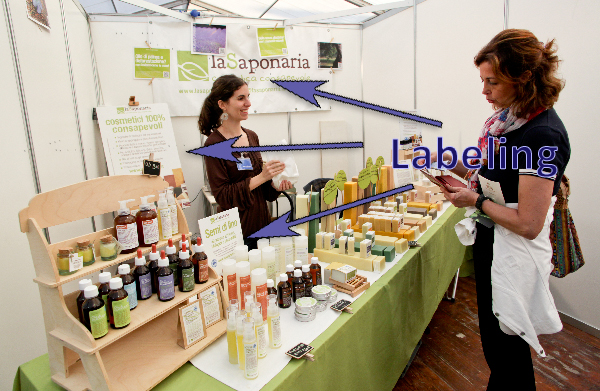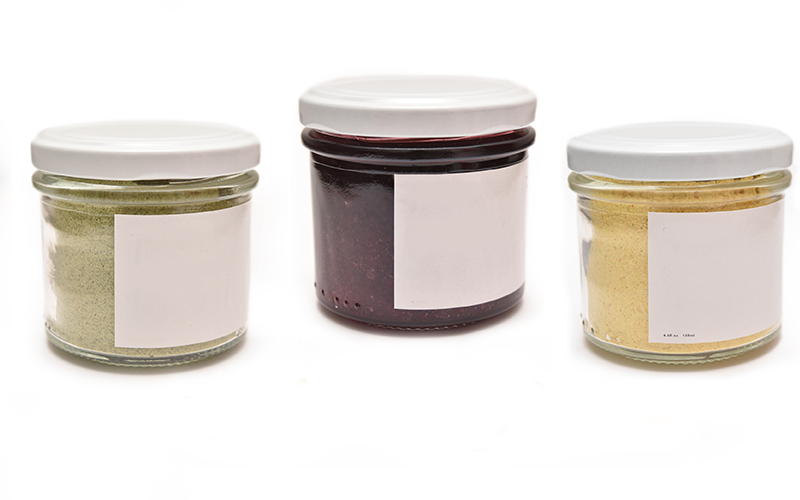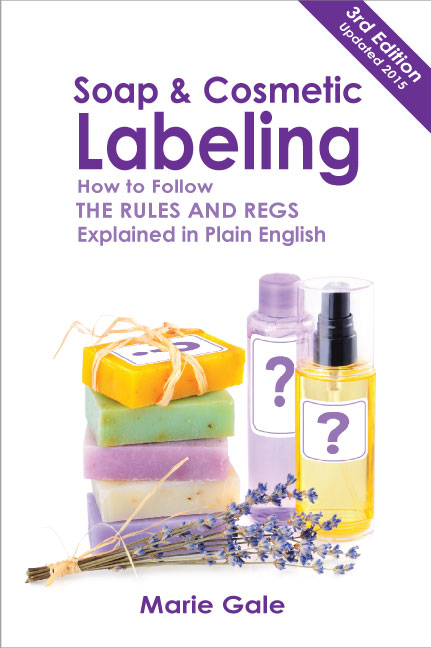Is there a difference between the “label” and the “labeling” when it comes to soap and cosmetic labels? YES. (Well, mostly.)
The FDA defines both “label” and “labeling” for food, drugs, and cosmetic products.
The FTC defines “label” for consumer commodities other than food, drugs, and cosmetics.
Most states have regulations that define “label” and “labeling” for food, drugs, and cosmetics. The Uniform Packaging and Labeling Regulation (adopted by most states) defines “label” for consumer commodities excluding food, drugs, and cosmetics.
Federal – FDA Regulations
The FDA regulations define both the “label” and the “labeling.” Since this is an FDA regulation, it applies to foods, drugs, cosmetics, and medical devices.
Label (FDA)
Directly from the regulations:
Label means any display of written, printed, or graphic matter on the immediate container of any article, or any such matter affixed to any consumer commodity or affixed to or appearing upon a package containing any consumer commodity.
So the label is what is actually affixed to or printed on the package and/or container containing the product.

Labeling (FDA)
Directly from the regulations:
Labeling includes all written, printed, or graphic matter accompanying an article at any time while such article is in interstate commerce or held for sale after shipment or delivery in interstate commerce.

So when you talk about the labeling of a product, you are discussing all of the material that goes with a product while it is out there in the market (technically called “in commerce”) or being held for sale or delivery. That could include printed brochures, signage, informational handouts, website copy, or even Facebook text. The FDA has even cited content metatags and keywords on websites as part of the information about a product.
Note that advertisements that do not “go with” a product are not considered part of the labeling. Actually, advertisements (even for cosmetics) are regulated by the Federal Trade Commission (FTC), not the FDA.
Federal – FTC Regulations
The FTC regulations define “label” but not “labeling.” The FTC definition is very similar to the FDA definition.
Label (FTC)
Directly from the regulations:
The term label means any written, printed, or graphic matter affixed to or appearing upon any consumer commodity or affixed to or appearing upon a package containing any consumer commodity.
The definition goes on to say that it excludes inspector’s tags, non-promotional matter attached, or the written, printed, or graphic material on containers or wrappers of commodities sold or distributed to industrial or institutional users.
NOTE: the definition of “consumer commodity” in the FTC regulations is any product or commodity that is customarily distributed through retail sales for consumption by individuals for personal care or in the household. The FTC definition specifically excludes food, drugs, cosmetics, or devices which are covered by the FDA.1
When you are speaking of soap that is exempt from the definition of a cosmetic, it is regulated by the FTC and this is the definition of “label” that applies.
State Regulations
For cosmetics, most states have either adopted the federal Food Drug and Cosmetic Act and the resultant regulations directly, or have written their own version which is the same (or very similar to) the federal laws and regs.
For consumer commodities other than food, drugs, cosmetics, and devices, most states have directly adopted the Uniform Packaging and Labeling Regulations (UPLR) or have regulations in place that are very similar to the UPLR.
Label (UPLR)
Directly from the regulations:
Label. – Any written, printed, or graphic matter affixed to, applied to, attached to, blown into, formed, molded into, embossed on, or appearing upon or adjacent to a consumer commodity, or a package containing any consumer commodity, for purposes of branding, identifying, or giving any information with respect to the commodity or to the contents of the package, except that an inspector’s tag or other non-promotional matter affixed to or appearing upon a consumer commodity shall not be considered a label requiring the repetition of label information required by this regulation.
Uniform Packaging and Labeling Regulation, Handbook 130, adopted by the National Conference on Weights and Measures, Section 2, Definitions. 2.5 Label
How does this apply?
While most of the details about how to label your products apply to the “label”, you also have to be aware of what you are saying in your “labeling” to make sure you don’t inadvertently change the nature of your product.
For example, you have a lotion that you sell. The label contains only the basic required information–the identity of the product, the net contents, and your name/address. Because it is a lotion, it is a cosmetic, and it also requires the ingredient declaration. However, on a sign in your craft fair booth, you say it “cures acne.” That sign is part of your labeling, and you have now made a medical (drug) claim for your product, which makes it an unapproved new drug.
Another example is a soap that meets all the requirements to be exempt from the definition of a cosmetic; it is identified as soap, it only claims to clean, and it is made with lye, water, and oils. The label has the basic information and says it is “soap,” but the description on your website where someone would purchase the soap says that it is “moisturizing and gently exfoliating.” Those are cosmetic claims, so your soap has now become a cosmetic. That’s okay, but you would need to make sure it is correctly labeled as a cosmetic.
Be aware of both the label AND the labeling of your product.



Leave a Reply